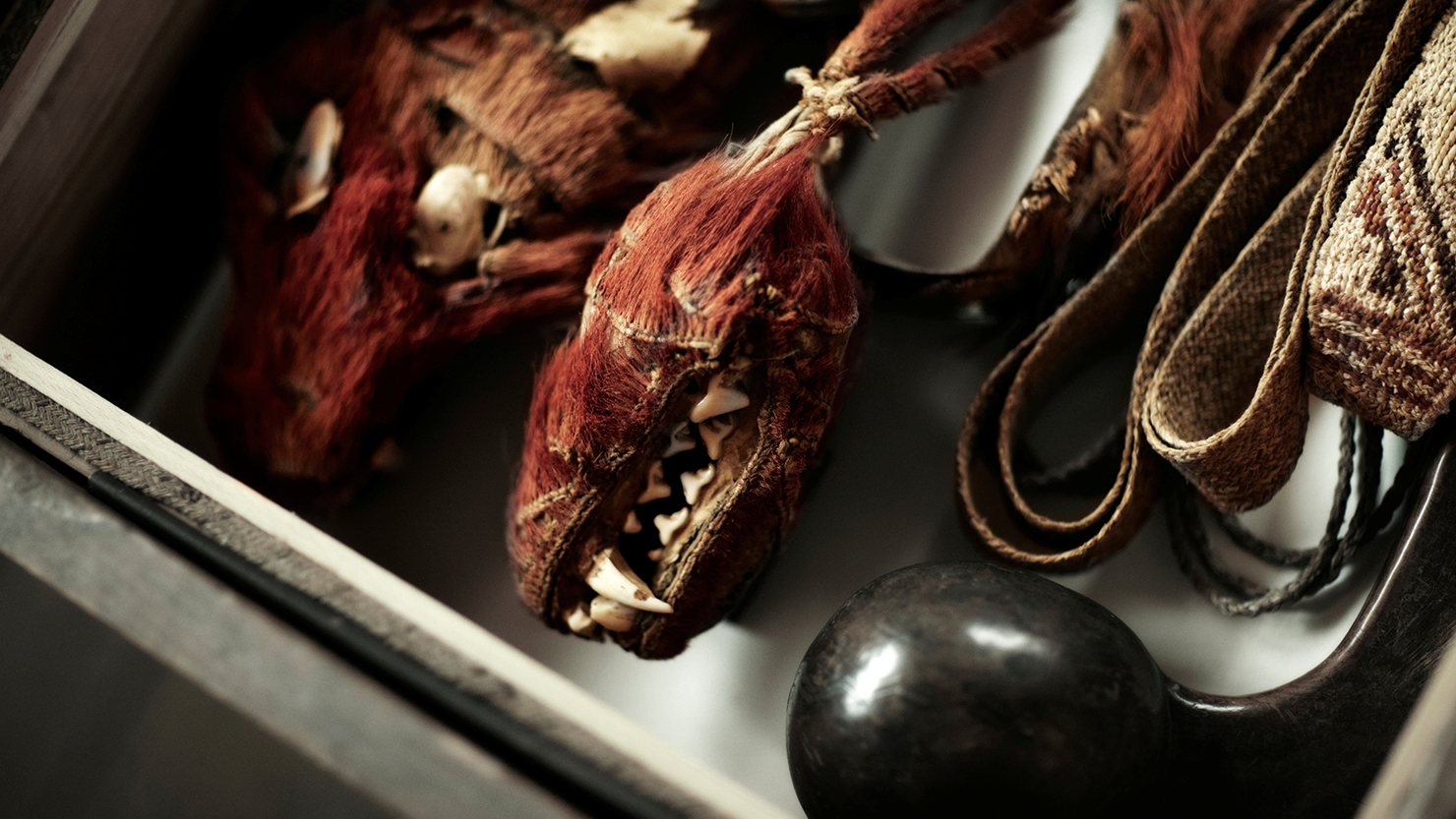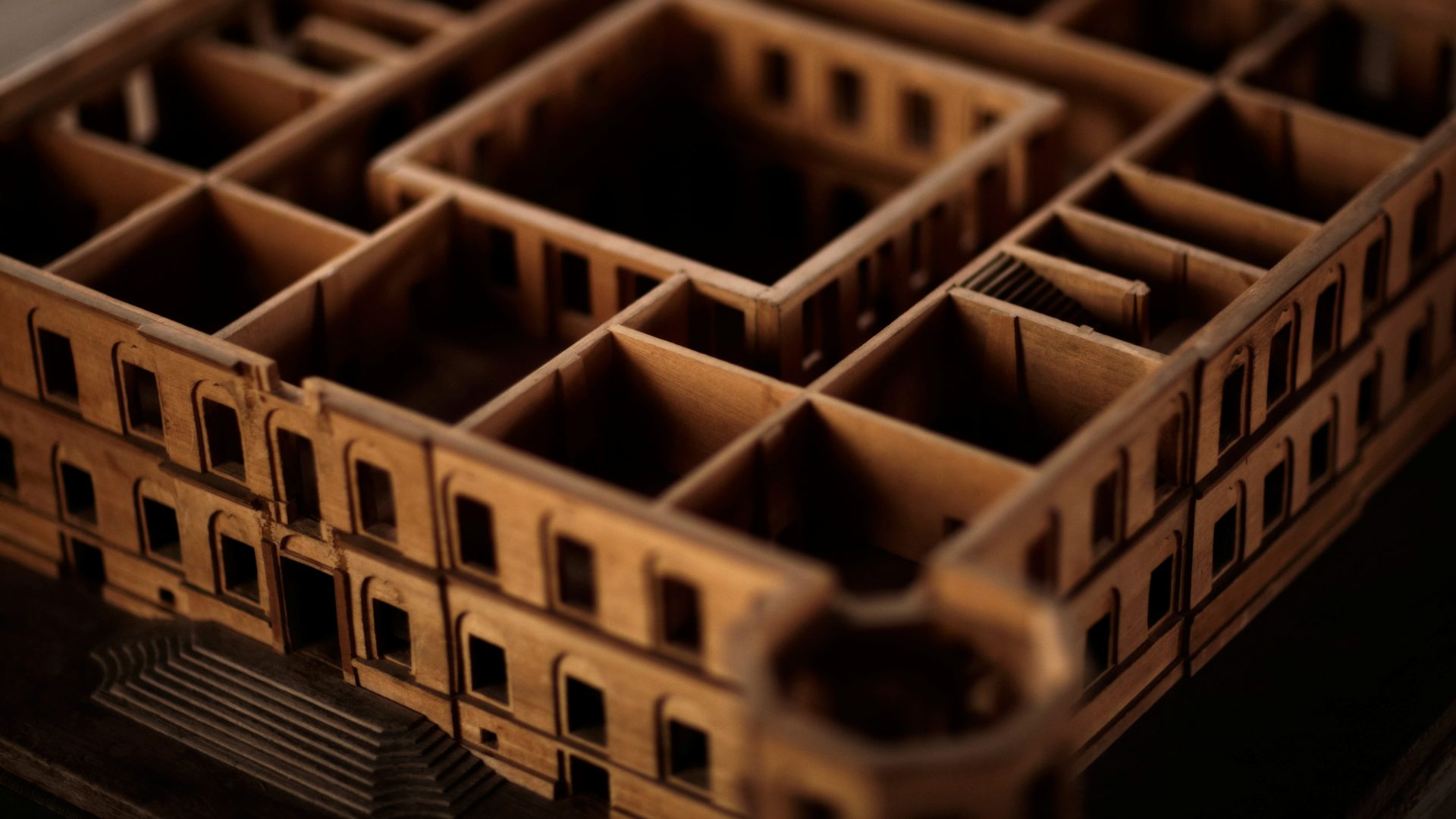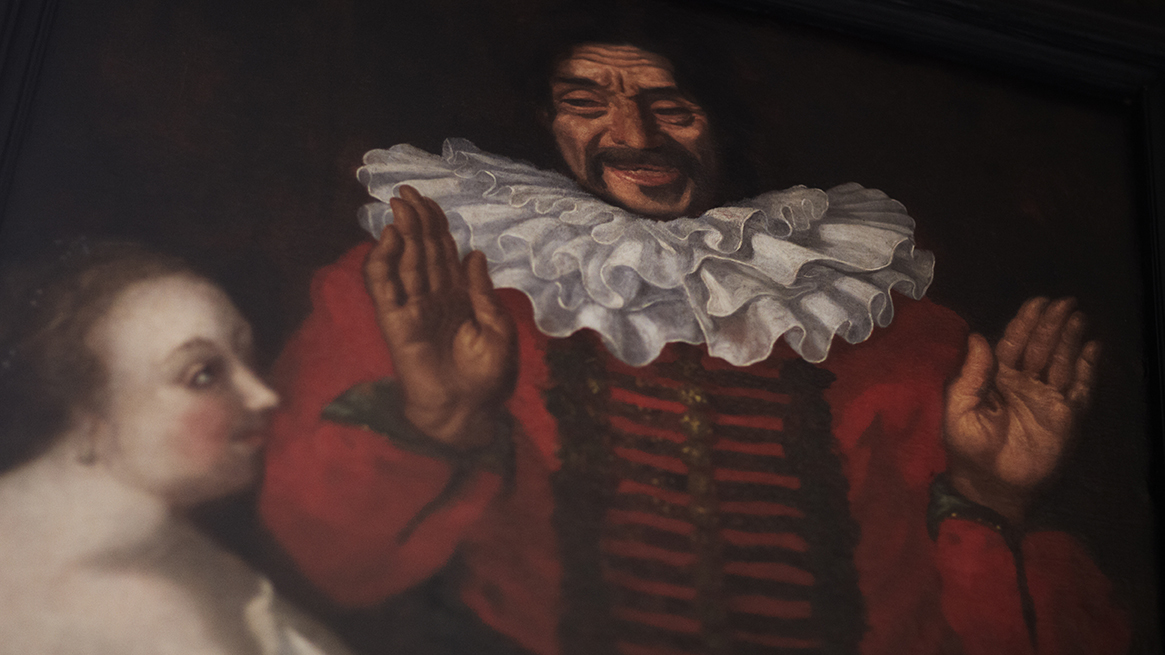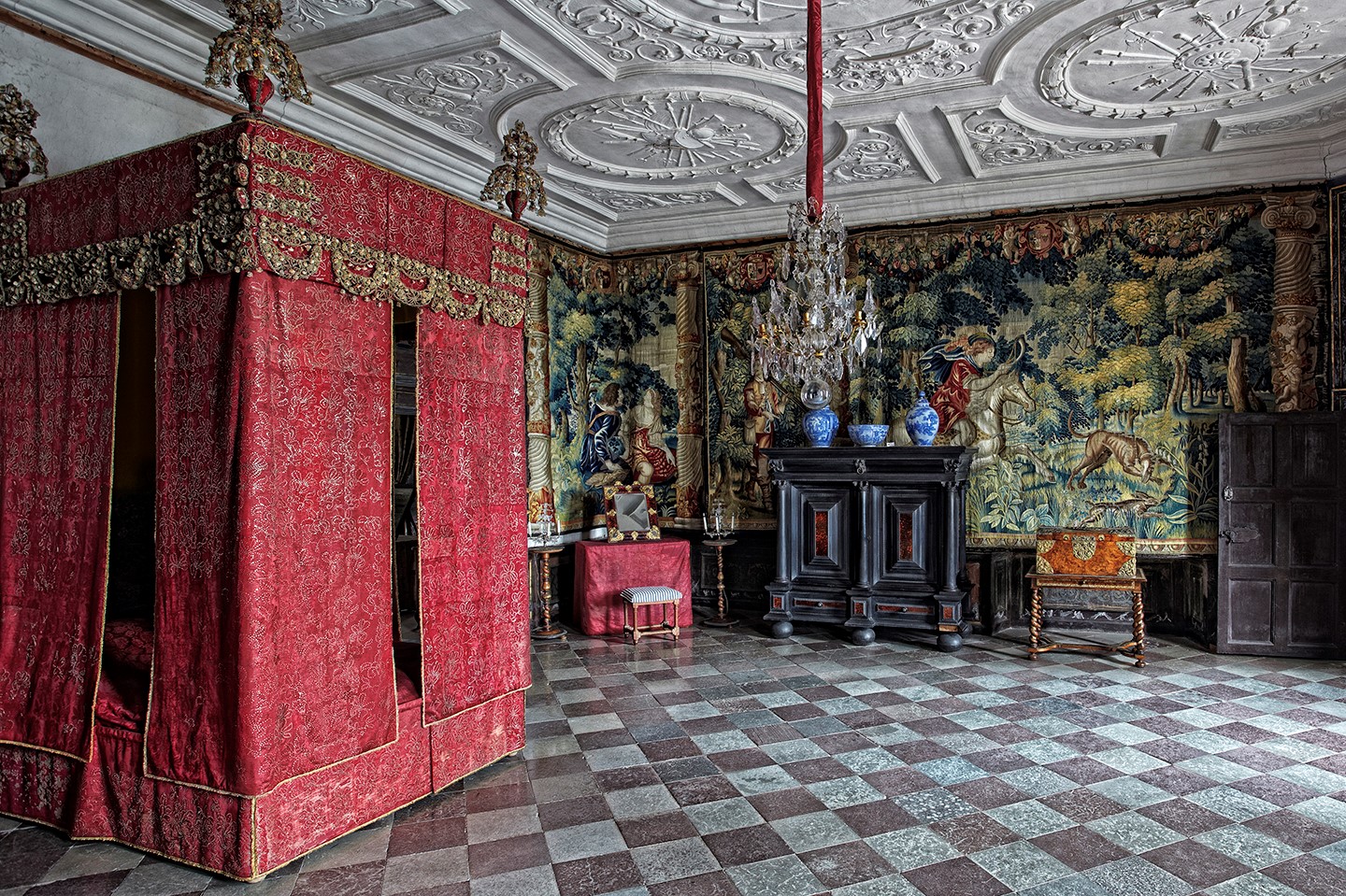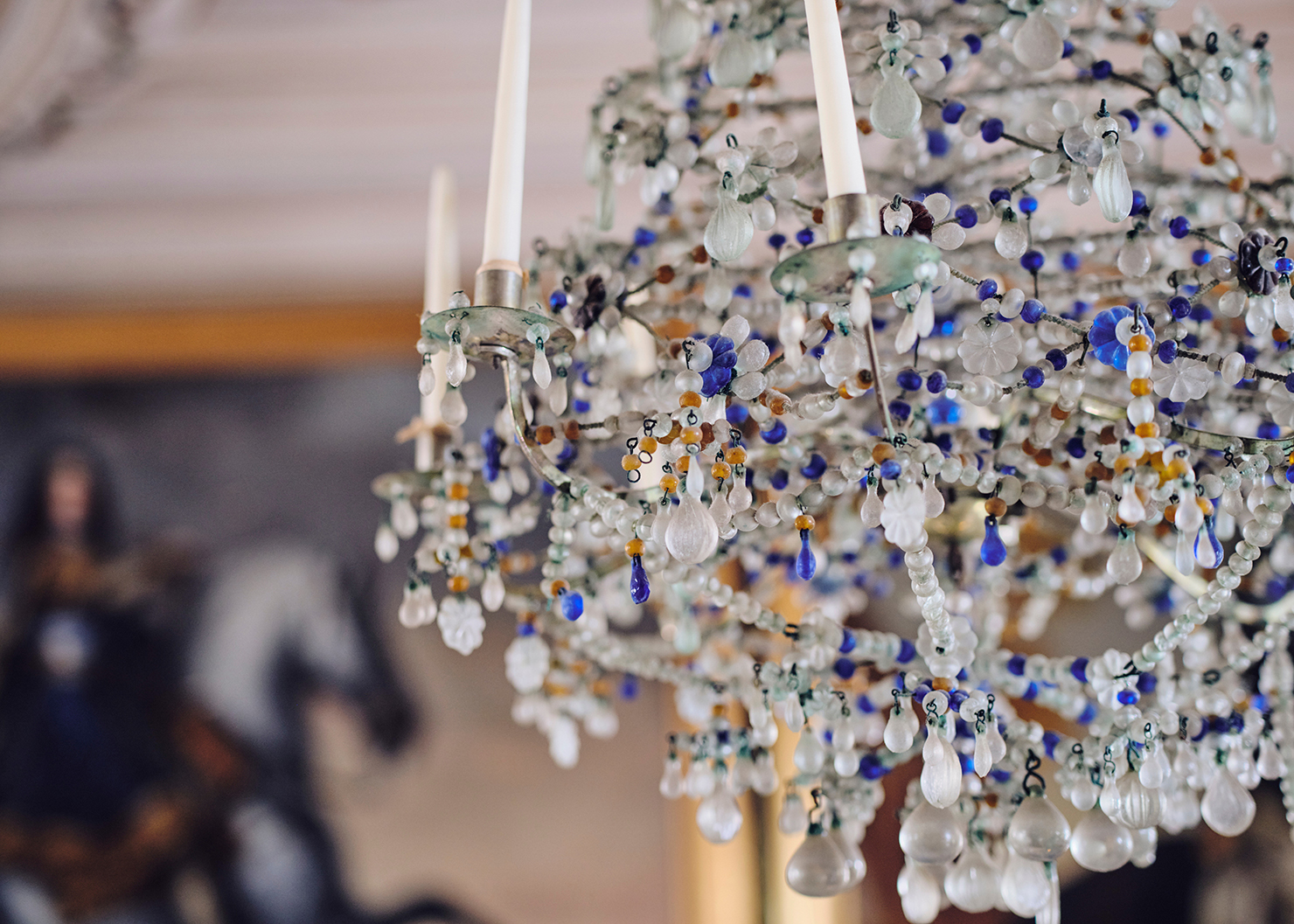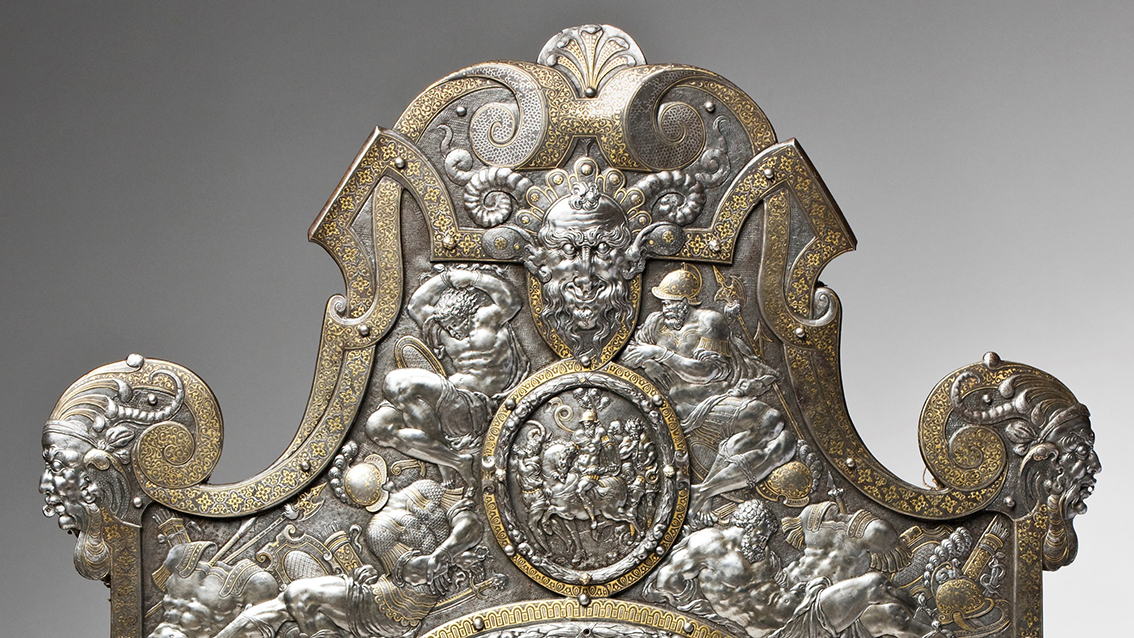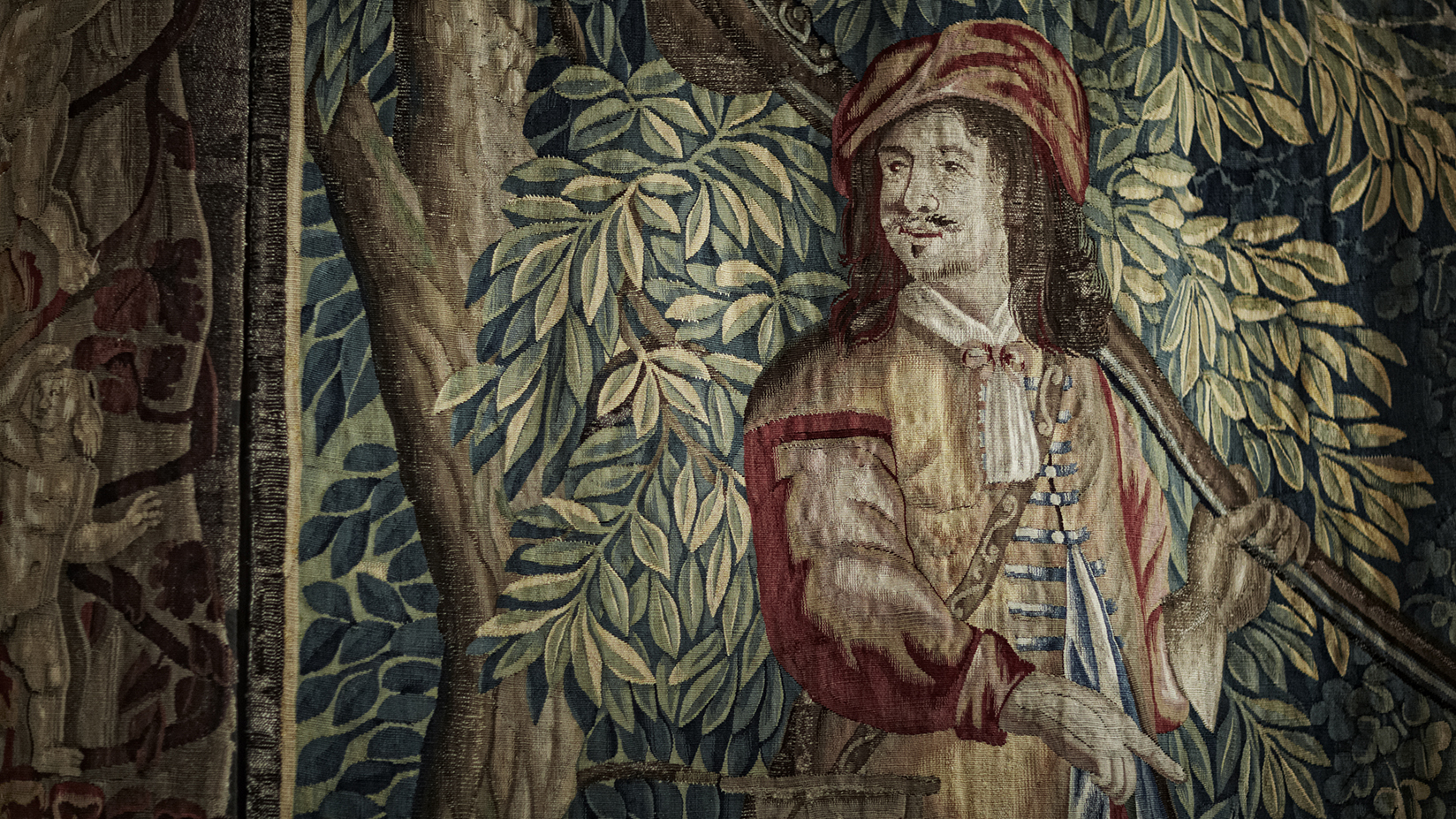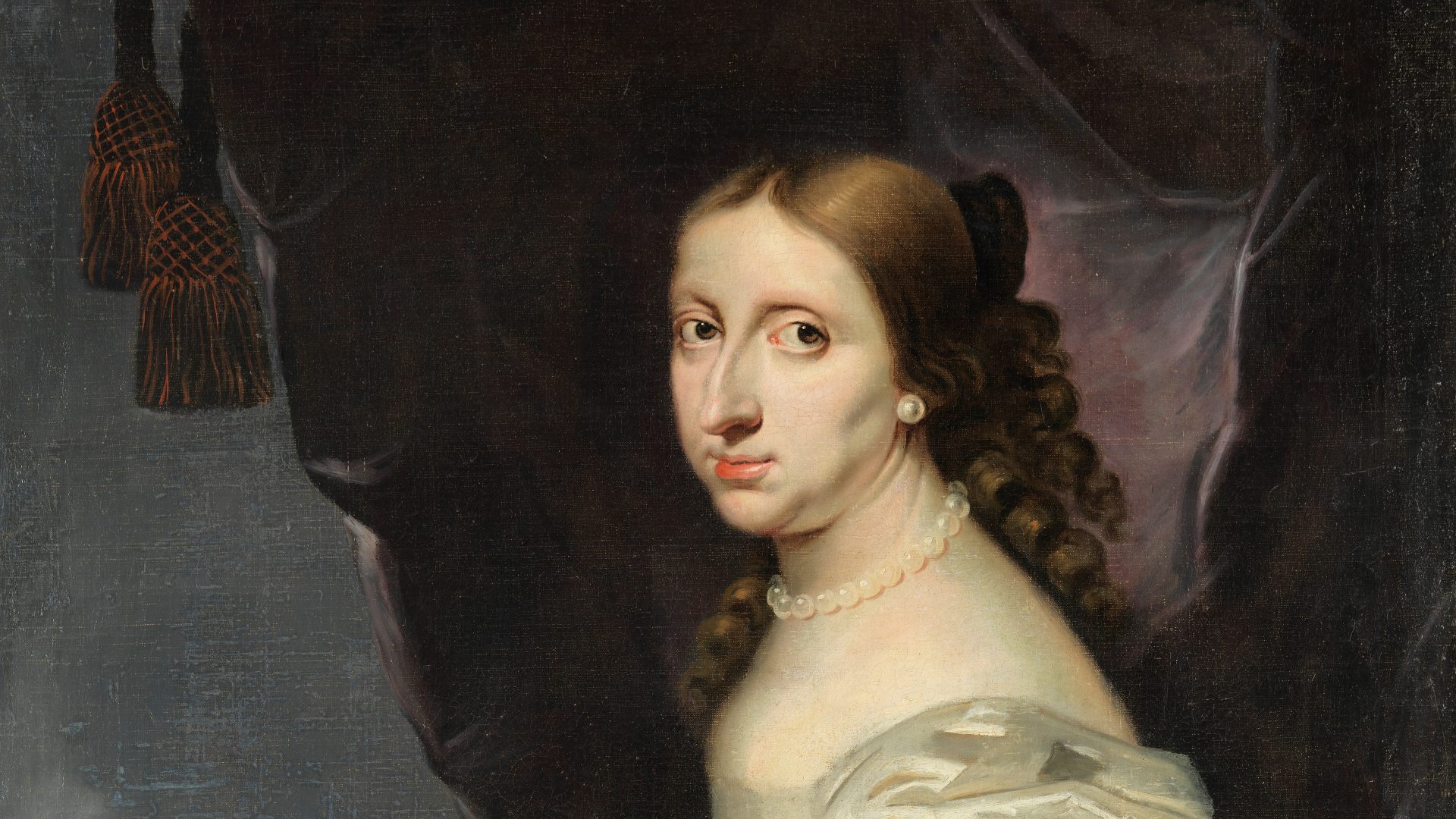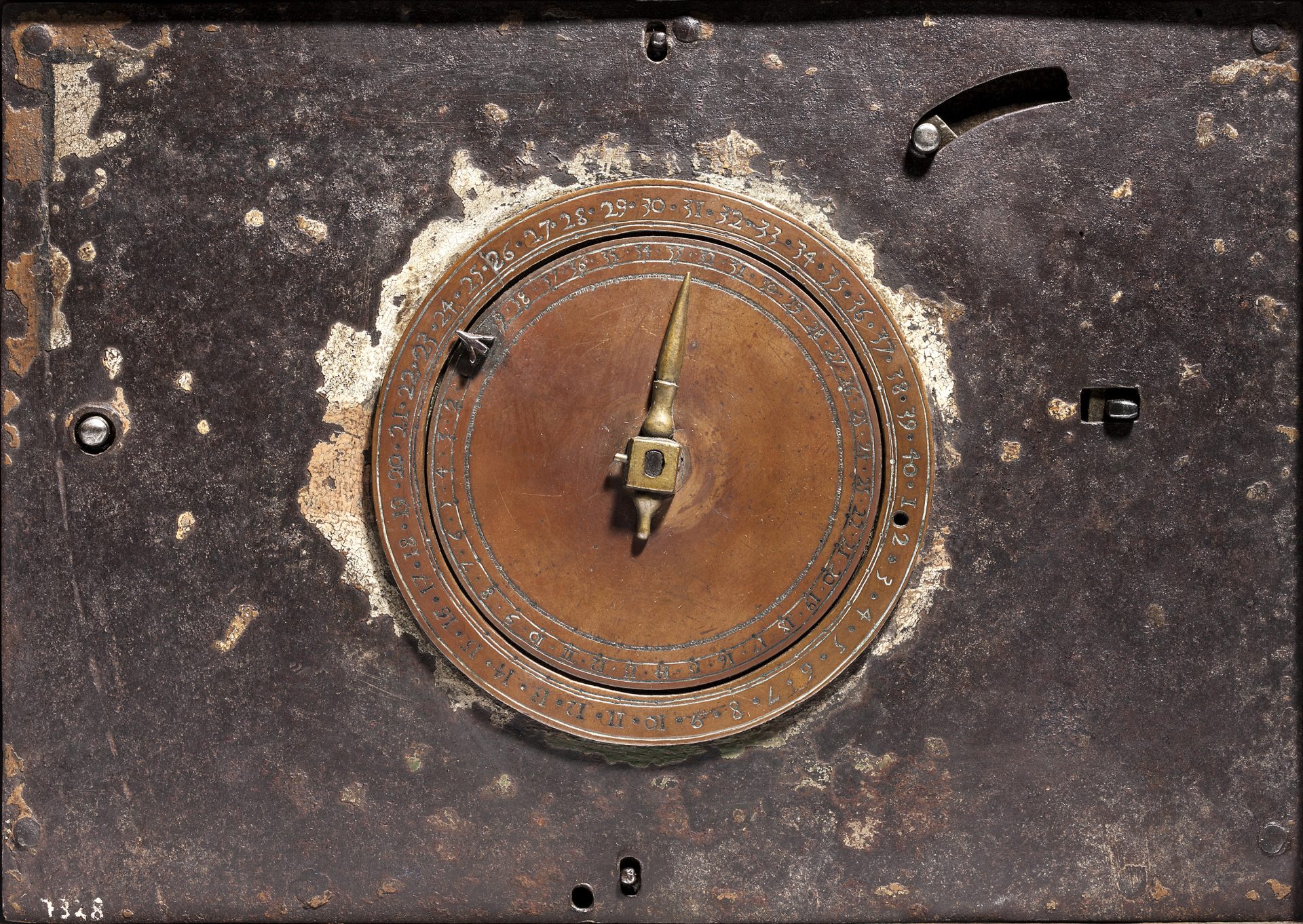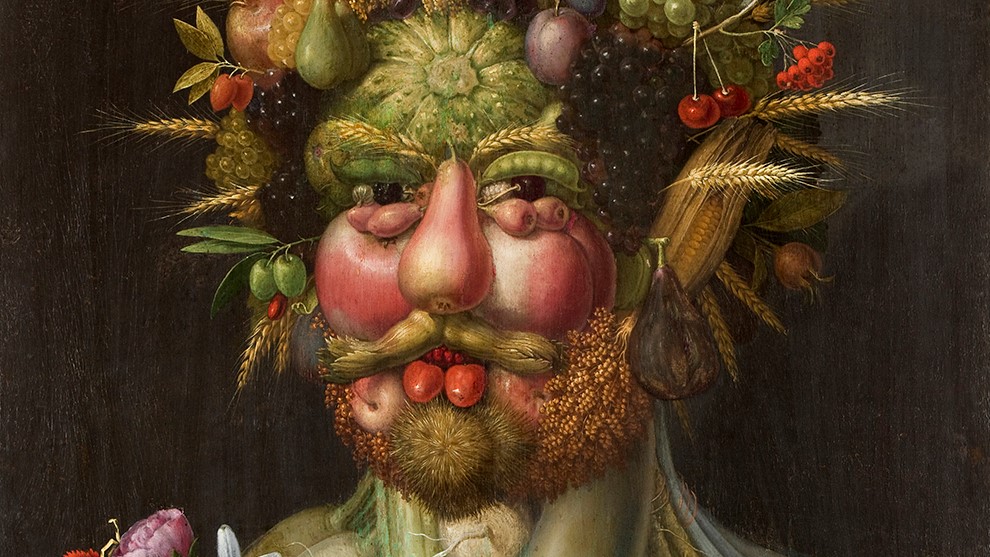
Vertumnus
In 1648, Prague was attacked by Swedish troops under the command of Hans Christoph von Königsmarck (1600–1663). They succeeded in taking the castle and with it many works of art. The spoils of war were transported in a caravan of carts to Stockholm. Number 351 in Königsmarck’s transport list is described as a face of fruit.
The final recipient of the war trophies was Queen Kristina. She had a large and outstanding collection of art and weapons. Naturally, she had first choice of the war trophies that came to Stockholm. However, it seems that Arcimboldo’s paintings did not fit in. Arcimboldo’s style was characteristic and, in the mid 17th century, old fashioned. That was probably why the paintings went to one of her subjects.
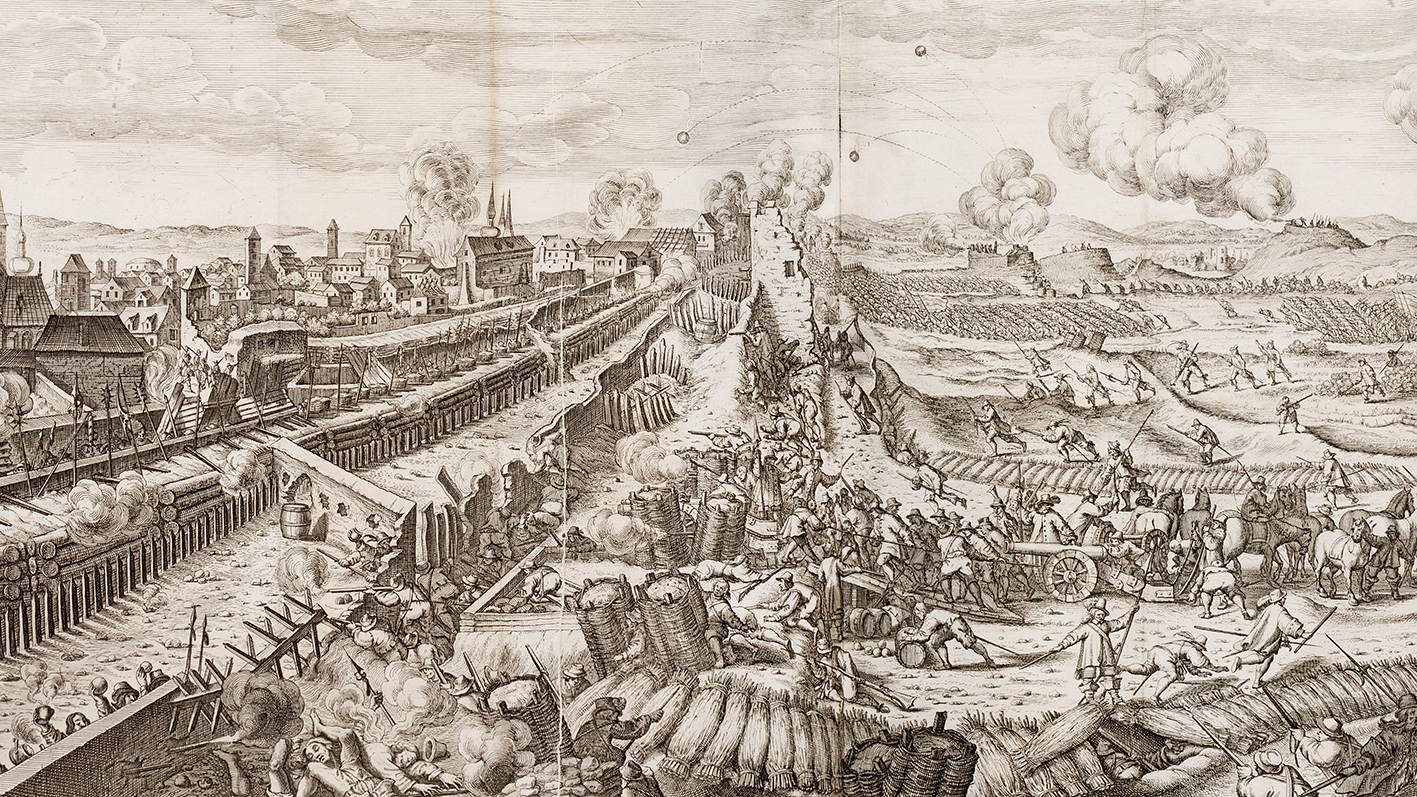
”A face composed of fruit” appears in the estate inventory after Per Brahe the younger (1602–1680). The painting hung at Bogesund Castle, one of his many properties. Sometime between 1828 and 1845 the painting was transferred to Skokloster by Magnus Brahe (1790–1844). The probable reason is that Magnus Brahe wanted to create a picture gallery on the second floor. However, the painting was hung in the library together with another painting by Arcimboldo, ”the Librarian”.
The two paintings by Arcimboldo lived an out of the way life for several decades. The art historian Olof Granberg, who was tasked with writing a guide to Skokloster Castle at the end of the 19th century, thought they were “two artistic products that are of inferior quality but interesting as cultural history”.
The change came in 1987, when curator Pontus Hultén hung Vertumnus in the exhibition ”the Archimboldo Effect” at Palazzo Grassi in Venice. At that point the painting became valuable. Today, it is one of the world’s best-known paintings. But what was Arcimboldo saying with this curious portrait?
To begin with, Vertumnus is the god of the seasons and change in Roman mythology. Vertumnus could change himself into different guises. His greatest wish was to win the love of the goddess Pomona. Stories about Vertumnus were widely spread in Arcimboldo’s through the narrative Metamorphosis by the poet Ovid.
Vertumnus was painted by Giuseppe Arcimboldo (1526/27–1593) as a gift to his former employer, Emperor Rudolf II (1576–1612). The painting was delivered to the emperor with an explanatory poem by Arcimboldo’s friend Gregorio Comanini.
A translation of Comanini’s poem give us some clues about Arcimboldo’s thoughts about the artwork. Comanini said “there is an ugliness that is lovelier than any beauty”.
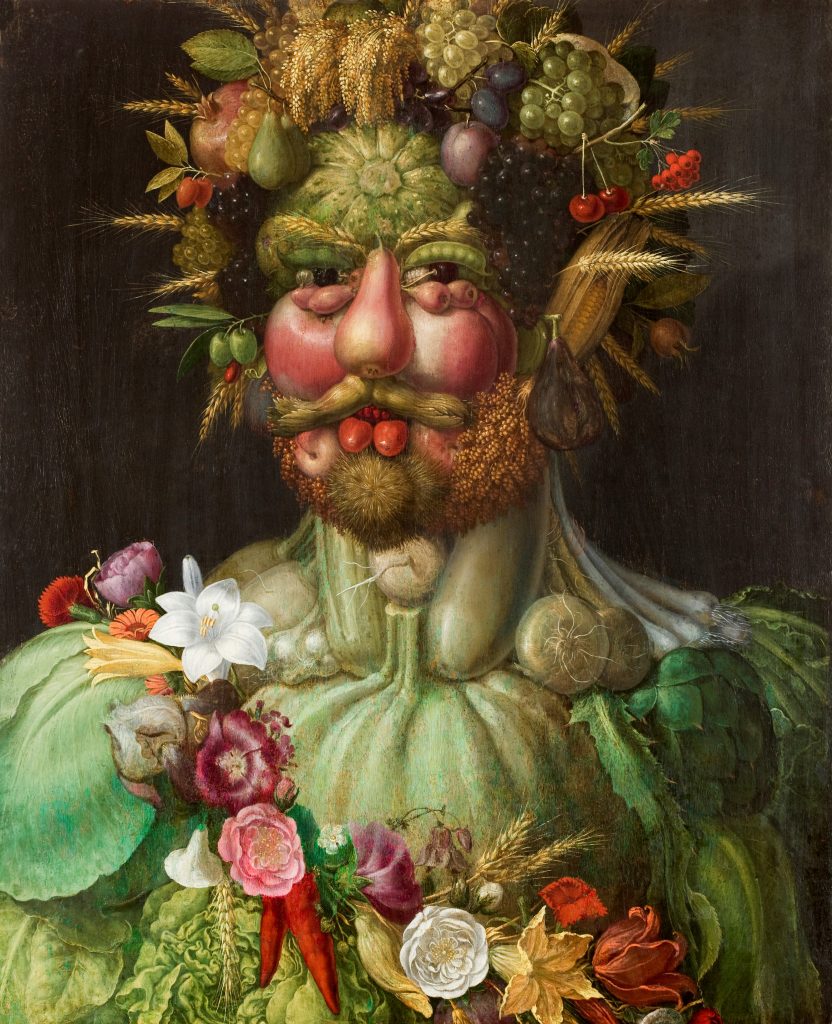
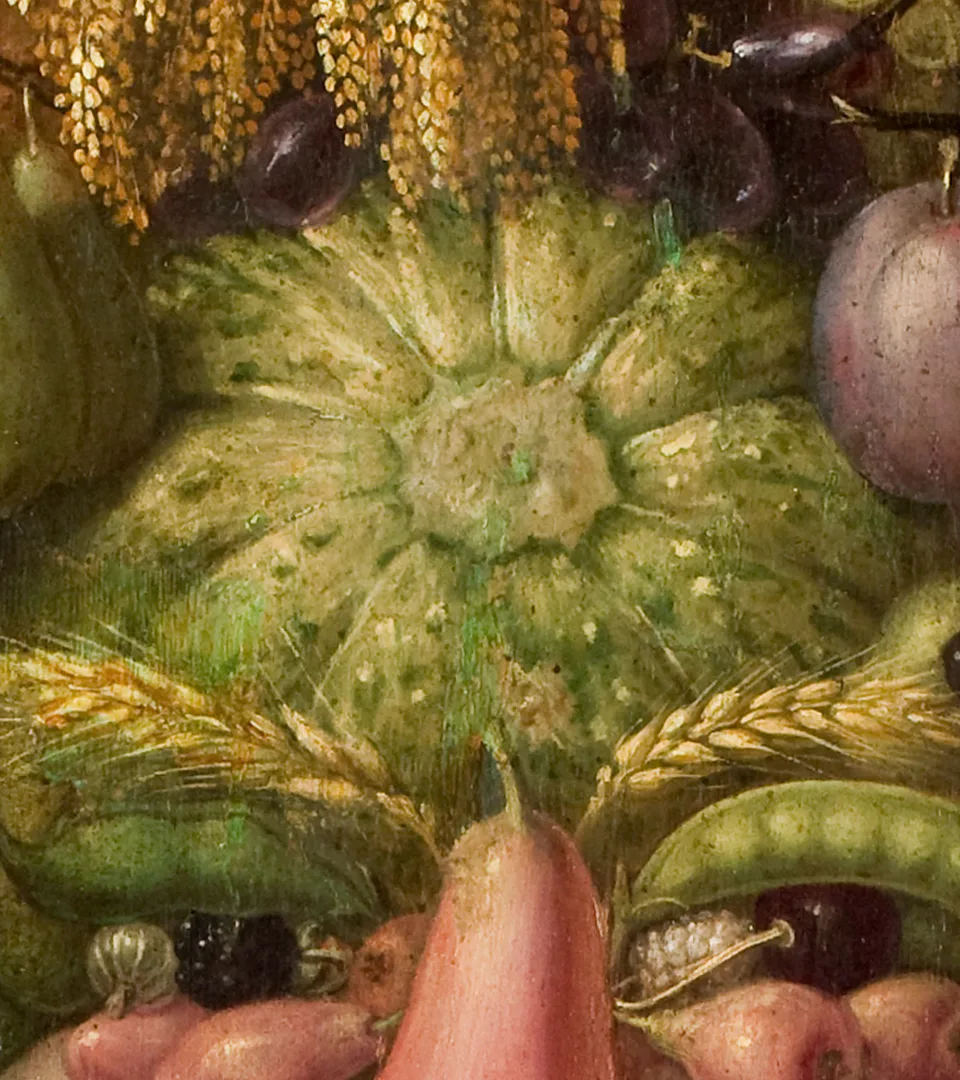
The Forehead
The melon comes to refresh us, to moisten our dry throats, with its sweetness and moisture.
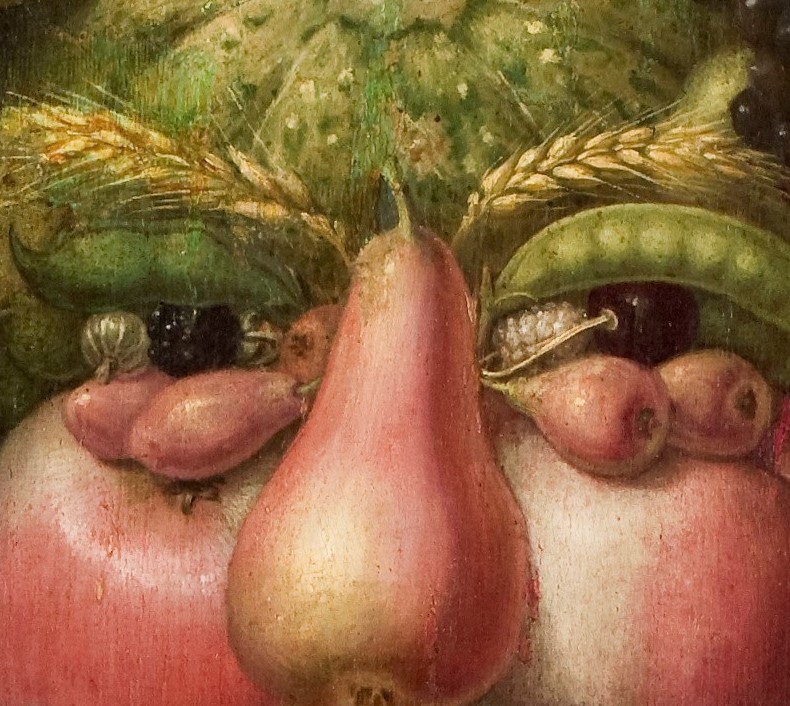
The Eyes
Then behold my eyes, one cherry coloured and one mulberry coloured...a youthful, cheerful vigour.
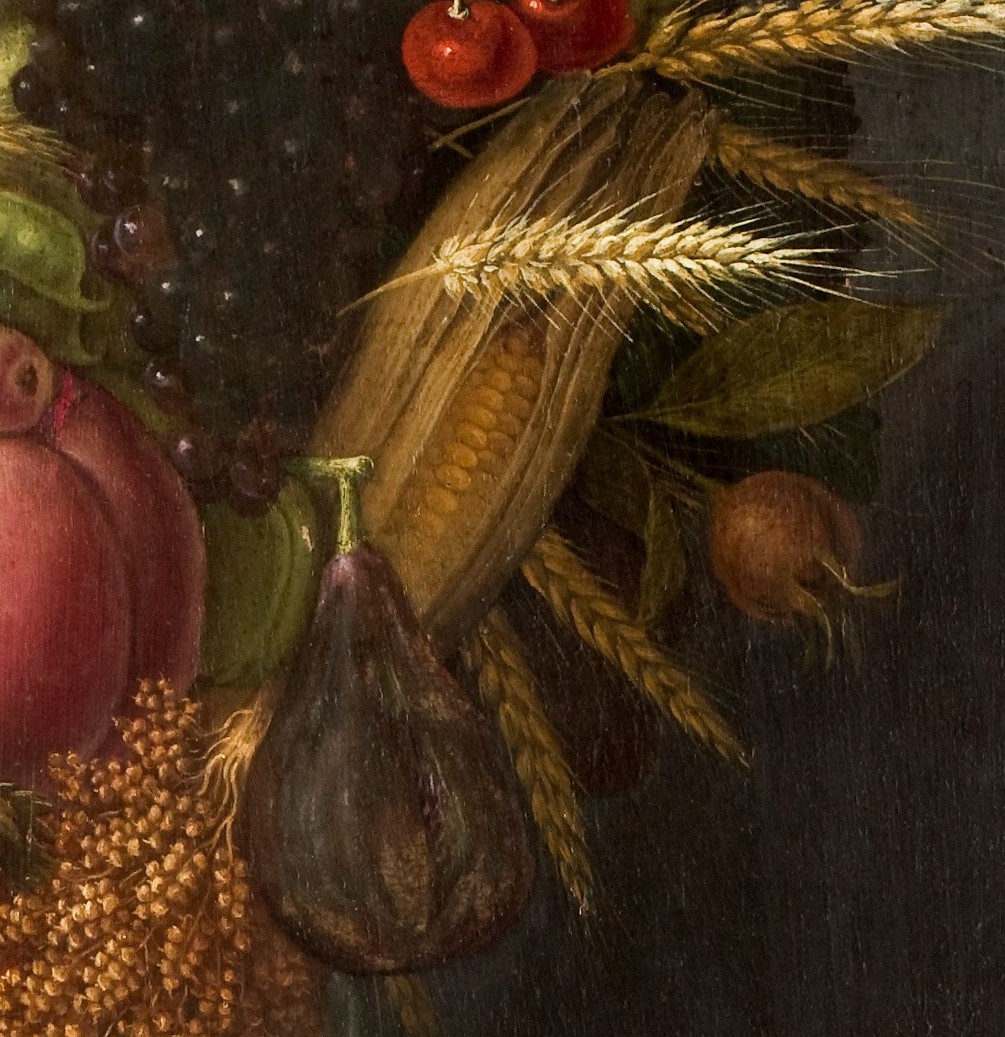
The Ears
Ears of maize, prickly, full of Juninus pollen, ripened in the sun...which in winter serves the shepherd in the mountain as a sweet, tasty meal for his wife and children.
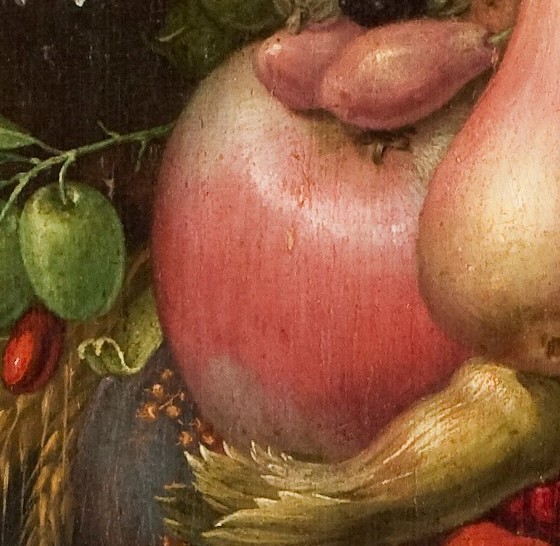
The Cheeks
Behold the apple and pear. Behold how my cheeks are formed, round and full of life.
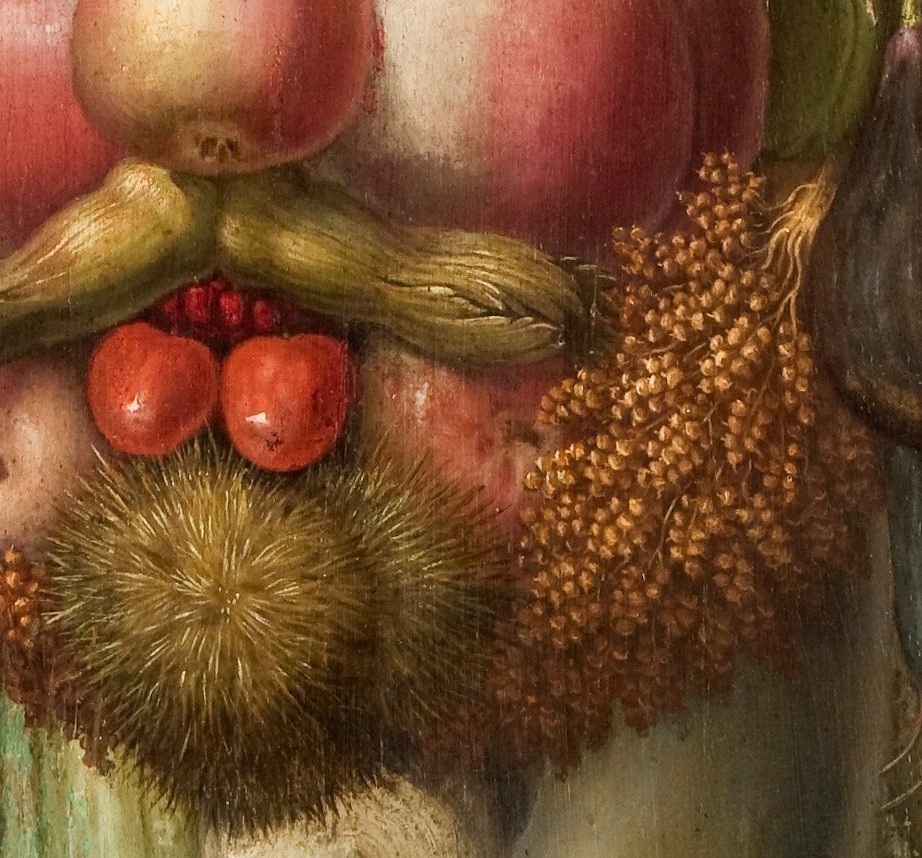
The Beard
Behold the two hazelnuts, with their green and empty skin above my lips. Although otherwise worthless, they form two sides of a fine, well trimmed moustache. A chestnut’s prickly shell hangs by my chin and becomes a perfect miracle of adornment, worthy of a man.

The Pendant
Behold this fig, ripened and opened, hanging from my ear. You might very well take me for a Frenchman
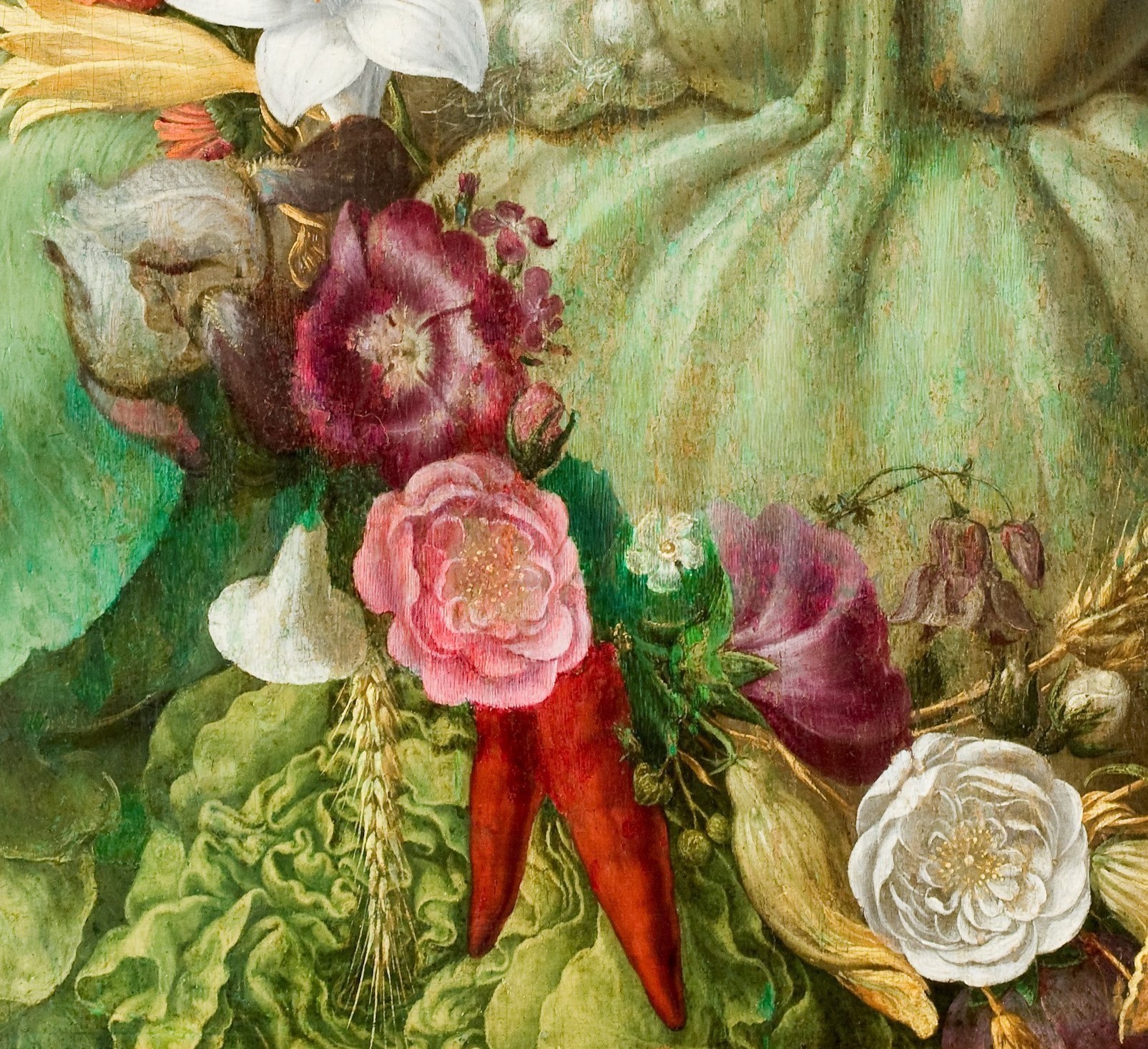
The Sash
Finally, behold this sash...draped over the chest and my right shoulder, so that you must value and appreciate me as a loyal vassal...bearing, triumphant, my master’s ensign and his coat of arms.
